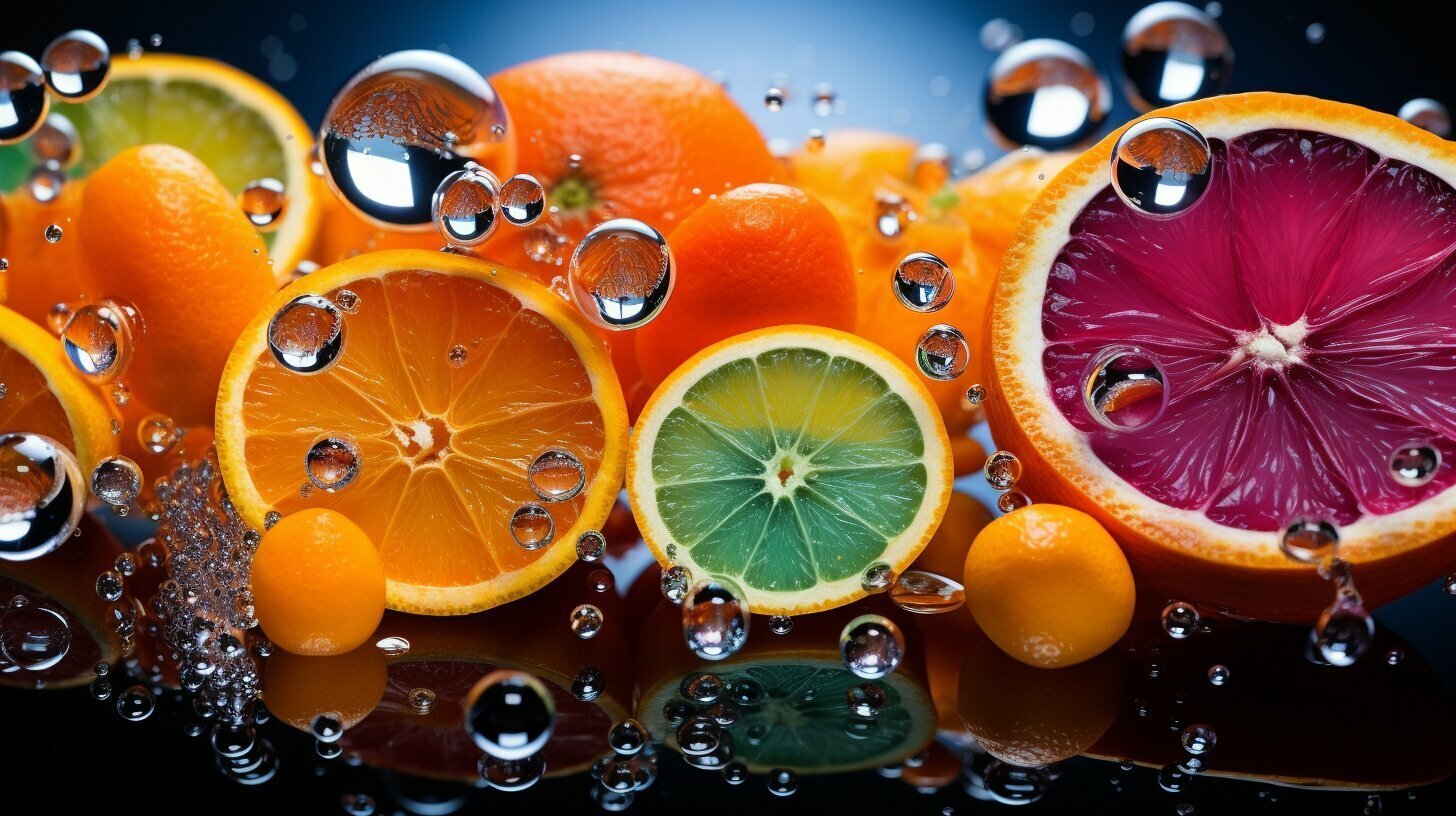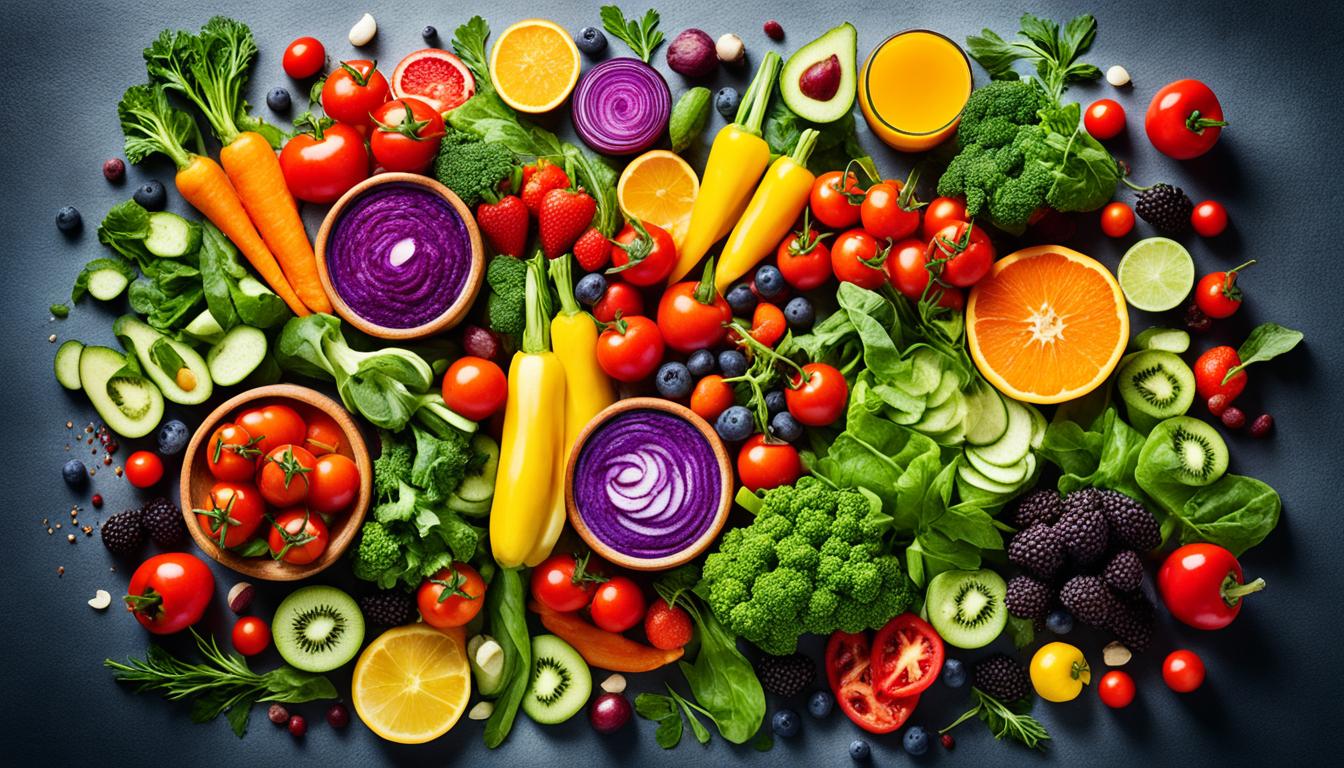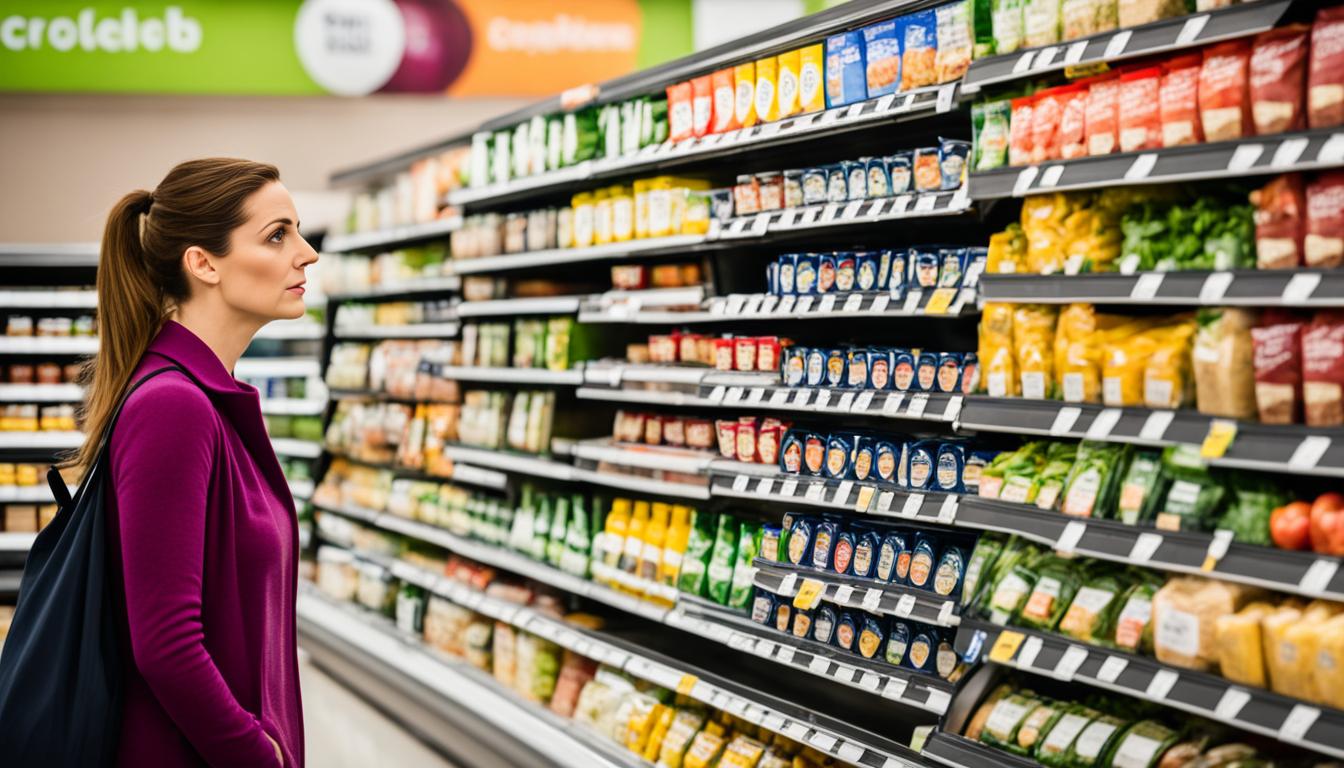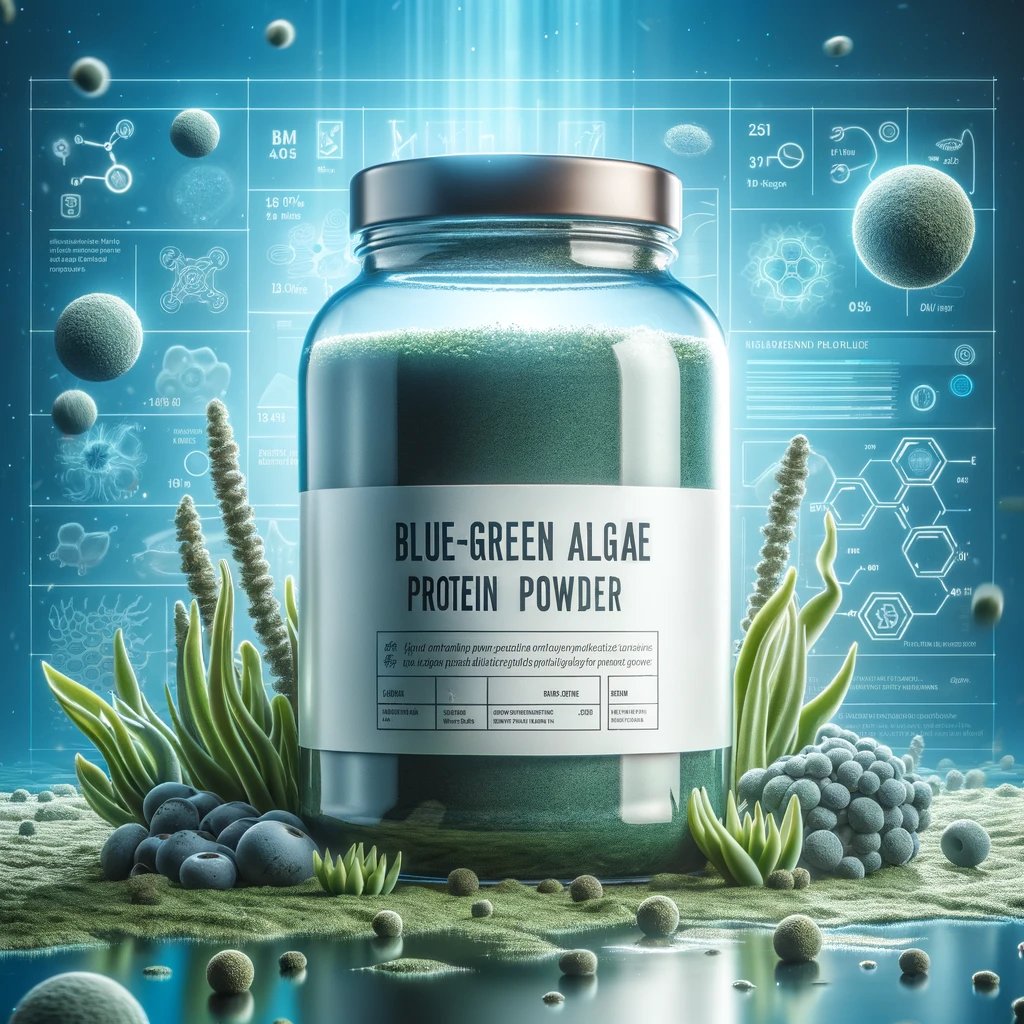
Spherification of Fruit Juices: A Modern Gastronomy Technique
SUBSCRIBE TO OUR BLOG
Promotions, new products, and recipes.
If you're a foodie always on the lookout for new techniques to up your cooking game, spherification is a must-try. This technique, which involves transforming liquids into small, flavorful spheres, has become increasingly popular in modern gastronomy. Today, we take a closer look at the process of spherification and how it can be used to transform your favorite fruit juices into culinary delights.
Key Takeaways:
- Spherification is a technique used in modern gastronomy to transform liquids into small spheres.
- It offers exciting creative possibilities for chefs and home cooks alike.
- Fruit juices can be transformed into semi-solid juice balls that burst with flavor in your mouth.
- The two main types of spherification are direct and reverse spherification.
- Specialized ingredients and tools are needed for successful spherification.
What is Spherification?
If you're looking to elevate your culinary creations and experiment with modern gastronomy, spherification is a technique you need to know about. Spherification is a process that transforms liquid into spherical shapes that explode with flavor in your mouth. It's a technique that has become increasingly popular in the culinary world and can be used to create visually stunning dishes that are sure to impress your guests.
To put it simply, spherification involves a chemical reaction between two ingredients: sodium alginate and calcium chloride. Sodium alginate is a natural polymer that comes from seaweed and is used to create a gel-like texture. Calcium chloride is a salt that reacts with the sodium alginate to create a thin layer around a liquid droplet, forming a spherical shape.
The process of spherification can be broken down into two main types: direct spherification and reverse spherification. With direct spherification, the liquid is mixed with sodium alginate and then added to a calcium chloride bath to create spheres. Reverse spherification, on the other hand, involves creating a calcium chloride bath and then adding the sodium alginate mixture to it.
The spherification technique gives you a lot of creative freedom in the kitchen. It can be used to transform any type of liquid, from fruit juices to alcoholic beverages, into semi-solid spheres that can be used in a variety of dishes and drinks. Whether you're looking to add a touch of elegance to your cocktails or create a unique dessert that will leave your guests in awe, spherification is a technique that can take your culinary creations to the next level.
Types of Spherification
There are two main types of spherification: direct spherification and reverse spherification.
Direct Spherification
Direct spherification involves using a sodium alginate bath to create a gel-like membrane around a liquid center. This type of spherification is best used for liquids with a high calcium content, as the calcium ions react with the sodium alginate to create the membrane. To create direct spherification balls, follow this basic spherification recipe:
- Mix the sodium alginate with a liquid, such as water or juice, until it dissolves.
- Add the liquid you want to spherify to the sodium alginate mixture.
- Use a syringe or dropper to carefully drip the mixture into a calcium chloride bath. The calcium ions in the bath react with the sodium alginate to create a thin membrane around each droplet.
- After a few moments, remove the spheres from the calcium bath and rinse them thoroughly with water.
Reverse Spherification
Reverse spherification involves coating a liquid center with a sodium alginate solution and then submerging it in a calcium bath. Unlike direct spherification, reverse spherification is best for low calcium liquids like fruit juices.
To perform reverse spherification, follow these steps:
- Mix the calcium lactate gluconate with a liquid of your choice.
- Use a syringe or dropper to form small droplets of this mixture. Place them in the freezer for about 5 minutes to partially solidify.
- Mix the sodium alginate into a separate liquid, like water or juice.
- Remove the partially solidified droplets from the freezer and submerge them into the sodium alginate solution for a few minutes.
- Remove the spherified droplets from the sodium alginate solution and rinse them with water.
Both of these methods have their own unique advantages and can be used to create a wide variety of spherified liquids. Experiment with different liquids and techniques to discover your perfect spherification recipe.
Spherification Ingredients and Tools
To successfully create spherified fruit juices, you will need some essential ingredients and tools. These include:
- A spherification kit: This kit typically comes with various tools and ingredients necessary for spherification, such as calcium chloride and sodium alginate. You can purchase a kit from most gourmet food stores or online.
- Fruit juice: The juice should be fresh and clear in color. Avoid using pulpy or chunky juices, as they may affect the texture of the spheres.
- Calcium chloride: This ingredient is used to create the gel-like membrane around the juice spheres. It is available in a powdered form and is usually included in the spherification kit.
- Sodium alginate: This ingredient is used to create the juice spheres. It is also available in a powdered form and is typically included in the spherification kit.
- A blender: You will need a blender to create a smooth and consistent mixture of fruit juice, calcium chloride, and sodium alginate.
- A syringe or dropper: This tool is used to drop the juice mixture into the calcium chloride bath, creating the spheres.
With these ingredients and tools, you can start creating your own spherified fruit juices and experimenting with different flavors and textures. Make sure to follow the instructions included in your spherification kit carefully for best results.
Best Liquids for Spherification
When it comes to spherification, not all liquids are created equal. The best liquids for spherification are those with a low calcium content and a high acid content. This is because the process of spherification involves creating a chemical reaction between calcium and sodium alginate, which is a substance derived from algae. The reaction results in the formation of a gel-like membrane around the liquid, creating a sphere.
Fruit juices are a popular choice for spherification, due to their high acid content. Some of the best fruit juices for spherification include citrus juices, such as orange and grapefruit, as well as pomegranate and cranberry juice.
You can also experiment with other liquids, such as flavored syrups or alcoholic beverages. Just be sure to choose liquids with the right balance of acid and calcium content for successful spherification.
It's also important to note that some liquids may require adjustments to the spherification recipe or technique. For example, dairy products like milk or cream may require the use of a different spherification technique called reverse spherification, which involves using calcium chloride instead of sodium alginate.
Overall, the best liquids for spherification are those with a high acid content and low calcium content. With a little experimentation and creativity, you can transform your favorite fruit juices and other liquids into stunning culinary creations.
Here are some popular fruit juices used in spherification:
- Orange Juice: A classic choice, orange juice spheres can burst with a refreshing citrus flavor.
- Mango Juice: With its smooth texture and tropical taste, mango juice is a favorite for many.
- Pomegranate Juice: Its deep red color and tangy flavor make pomegranate juice spheres visually appealing and delicious.
- Passion Fruit Juice: Another tropical choice, passion fruit has a unique tartness that works well in spherified form.
- Lemon or Lime Juice: These citrus juices can be used to create tart and zesty spheres, often used as garnishes or in cocktails.
- Pineapple Juice: Its sweet and tangy flavor profile makes pineapple juice a popular choice for spherification.
- Raspberry or Strawberry Juice: Berry juices offer a sweet and slightly tart flavor, and their vibrant colors are visually appealing.
- Grape Juice: Both red and white grape juices can be used, offering a sweet and sometimes tart flavor.
- Blueberry Juice: With its deep blue color and sweet flavor, blueberry juice spheres can be a visual and flavorful treat.
- Kiwi Juice: Its vibrant green color and unique tangy-sweet flavor make kiwi juice a fun choice for spherification.
- Melon Juice (Cantaloupe or Honeydew): Melon juices offer a subtle sweetness and can be a refreshing addition to dishes.
- Lychee Juice: Popular in Asian cuisine, lychee juice offers a sweet and floral flavor.
When using fruit juices for spherification, it's essential to consider the acidity and calcium content of the juice, as these factors can affect the spherification process. Some juices may require adjustments, such as the addition of calcium lactate or sodium alginate, to achieve the desired spherification results.
Spherification Recipes and Examples
Now that you have a basic understanding of spherification, it's time to get creative and experiment with different recipes. Here are some ideas:
- Fruit Juice Spheres: Begin with a basic spherification recipe and use your favorite fruit juices to create colorful orbs that burst with flavor in your mouth.
- Balsamic Vinegar Pearls: Mix balsamic vinegar with sodium alginate and use a calcium bath to create small, delicate pearls that are perfect for adding a touch of elegance to salads and entrees.
- Mimosa Bubbles: Combine orange juice and champagne and use reverse spherification to create light, airy bubbles that are reminiscent of your favorite brunch cocktail.
- Mojito Spheres: Mix lime juice, mint syrup, and rum and use direct spherification to create tiny spheres that pack a flavorful punch.
Don't be afraid to experiment and come up with your own unique spherification creations. With a little practice and the right ingredients, the possibilities are endless.
Spherification and Science
Spherification isn't just a culinary technique; it's also a science experiment waiting to happen. Science fair projects involving spherification can focus on the chemical reactions that take place during the process, the different types of spherification, or the best liquids for spherification.
If you're looking for inspiration, websites like Spherification Science Buddies offer resources and ideas for science projects involving spherification. For example, you could experiment with different liquids to see which ones work best for spherification, or explore the science behind the chemical reactions that occur during the process.
One thing to keep in mind is that spherification involves working with specialized ingredients like sodium alginate and calcium chloride, which may not be readily available in a typical home setting. However, spherification kits can make the process more accessible and provide all of the necessary ingredients and tools.
Whether you're a student looking for a science fair project or simply interested in the scientific principles behind spherification, this technique offers a unique opportunity to explore the intersection of food and science.
Spherification and Alcohol
Are you looking for an innovative way to elevate your cocktail game? Look no further than alcohol spherification. This technique allows you to transform your favorite alcoholic beverages into visually stunning spheres that are sure to impress your guests.
The process for alcohol spherification is similar to standard spherification but requires a bit of extra care and attention. Using the right combination of ingredients is key to creating perfect alcoholic spheres that have a firm exterior and a liquid interior.
When it comes to choosing the right alcohol for spherification, the possibilities are endless. From classic gin and tonic spheres to more adventurous creations like tequila sunrise orbs, the possibilities are limited only by your imagination.
To get started with alcohol spherification, you will need a spherification kit and specialized ingredients like sodium alginate and calcium chloride. These can be easily purchased online or at specialty kitchen stores.
Once you have your ingredients and tools, you can experiment with different ratios and combinations of alcohol and other liquids to create unique and flavorful spheres. Impress your guests and take your cocktail game to the next level with alcohol spherification.
Spherification in a Nutshell
Spherification is the incredible technique that involves the transformation of drinks into semi-solid juice balls that pop in your mouth. This process allows you to create visually stunning culinary orbs that are not only pleasing to look at but also burst with flavor in every bite.
The spherification process uses a scientific principle called reverse gelation, which involves the solidification of a liquid when added to a calcium-rich solution. When fruit juices are combined with sodium alginate and then introduced to a calcium bath, they form a thin membrane around the liquid center, resulting in tiny, flavorful spheres.
This technique is perfect for experimenting with a wide range of liquids, from fruit juices to alcoholic beverages, and can be used to create unique and exciting culinary creations. The possibilities are endless when it comes to spherification, making it an excellent addition to any home cook's culinary arsenal.
Conclusion
Now that you have learned about the fascinating technique of spherification, it's time to unleash your creativity in the kitchen. From transforming your favorite fruit juices into culinary delights to creating visually stunning orbs that add a touch of elegance to your cocktails, the possibilities are endless.
Remember to start by understanding the meaning and process of spherification, and exploring the different types and essential ingredients and tools needed. Consider which liquids work best for this technique and get inspired by a variety of spherification recipes and examples.
Don't forget the science behind spherification, and how it can be incorporated into educational projects and science fair experiments. And if you want to add a touch of sophistication to your drinks and cocktails, explore the exciting world of alcohol spherification.
In a nutshell, spherification allows you to transform drinks into delightful, semi-solid juice balls that burst with flavor in your mouth. Embrace the art of spherification and let your imagination run wild in the kitchen!
FAQ
Q: What is spherification?
A: Spherification is a culinary technique that transforms liquids into spherical shapes, creating a unique and visually stunning presentation. It involves a chemical process that forms a gel-like membrane around the liquid, resulting in small spheres that burst with flavor when consumed.
Q: How does spherification work?
A: Spherification works by using sodium alginate and calcium chloride to create a gel-like membrane around a liquid. The liquid is mixed with sodium alginate to form a thicker mixture, then dropped into a bath containing calcium chloride. The reaction between the two ingredients causes the liquid to solidify into spheres, encapsulating the flavor inside.
Q: What are the types of spherification?
A: There are two main types of spherification: reverse spherification and direct spherification. In reverse spherification, the liquid to be spherified is mixed with calcium chloride, while the bath contains sodium alginate. Direct spherification involves mixing the liquid with sodium alginate and dropping it directly into a calcium chloride bath.
Q: What ingredients and tools do I need for spherification?
A: To perform spherification, you will need sodium alginate, calcium chloride, a whisk or blender for mixing, a syringe or pipette for dropping the liquid into the bath, and a slotted spoon or mesh strainer to remove the spheres from the bath. You may also consider purchasing a spherification kit, which includes all the necessary ingredients and tools.
Q: Which liquids work best for spherification?
A: The best liquids for spherification are those with a high water content and low acidity, such as fruit juices. Some popular choices include citrus juices, berry purees, and even alcoholic beverages. The choice of liquid will depend on the desired flavor and presentation of the spherification dish.
Q: Can you provide some spherification recipes and examples?
A: Certainly! Here are a few examples of spherification recipes: - Fruit Juice Spheres: Mix fruit juice with sodium alginate and drop into a calcium chloride bath. - Cocktail-Inspired Orbs: Create alcoholic spheres using your favorite cocktail recipes. - Gazpacho Spheres: Try spherifying gazpacho for a unique twist on the classic dish. These are just a few ideas to get you started. The possibilities for spherification are endless, so don't be afraid to experiment!
Q: What is the science behind spherification?
A: Spherification is rooted in chemistry. The reaction between sodium alginate and calcium chloride forms a gel-like membrane through a process called ion exchange. This chemical reaction creates a semi-solid structure that encapsulates the liquid, resulting in the formation of spheres.
Q: Can spherification be used with alcohol?
A: Absolutely! Spherification can be used with alcohol to create unique and visually appealing spheres for cocktails and drinks. By incorporating alcoholic beverages into the spherification process, you can add a touch of elegance and sophistication to your creations.
Q: What is the transformation of drinks into semi-solid juice balls that pop in your mouth?
A: Spherification allows for the transformation of liquid drinks into semi-solid juice balls that burst with flavor when consumed. This transformation occurs through the gel-like membrane formed around the liquid, creating tiny spheres that can be enjoyed in a single bite. The sensation of the spheres popping in your mouth adds an element of surprise and excitement to the culinary experience.
Q: What is the conclusion regarding spherification?
A: In conclusion, spherification is a fascinating culinary technique that allows you to transform ordinary liquids into visually stunning and flavorful spheres. With the right ingredients and tools, you can explore the creative possibilities of spherification and elevate your culinary creations to new heights. Embrace the art of spherification and let your imagination run wild in the kitchen!
For further reading: The spherification process

- Choosing a selection results in a full page refresh.



